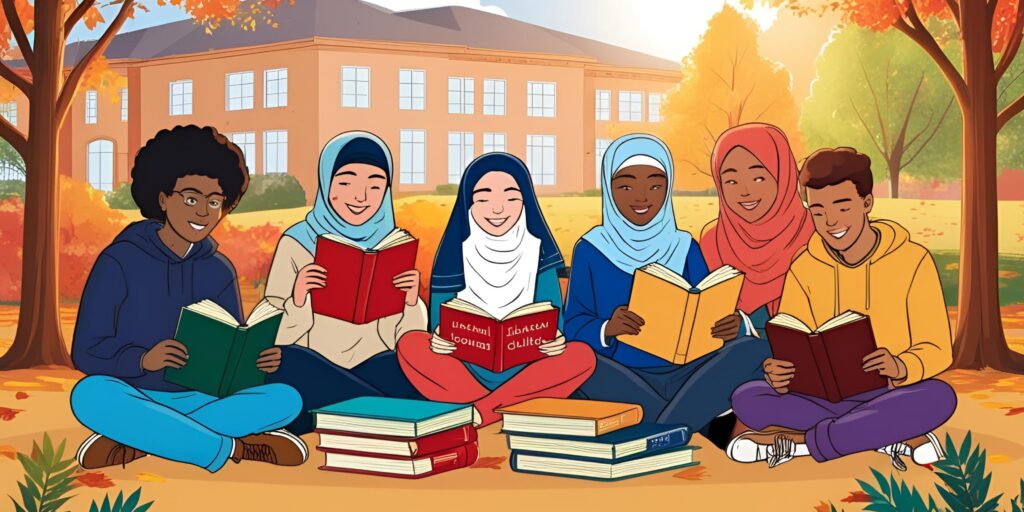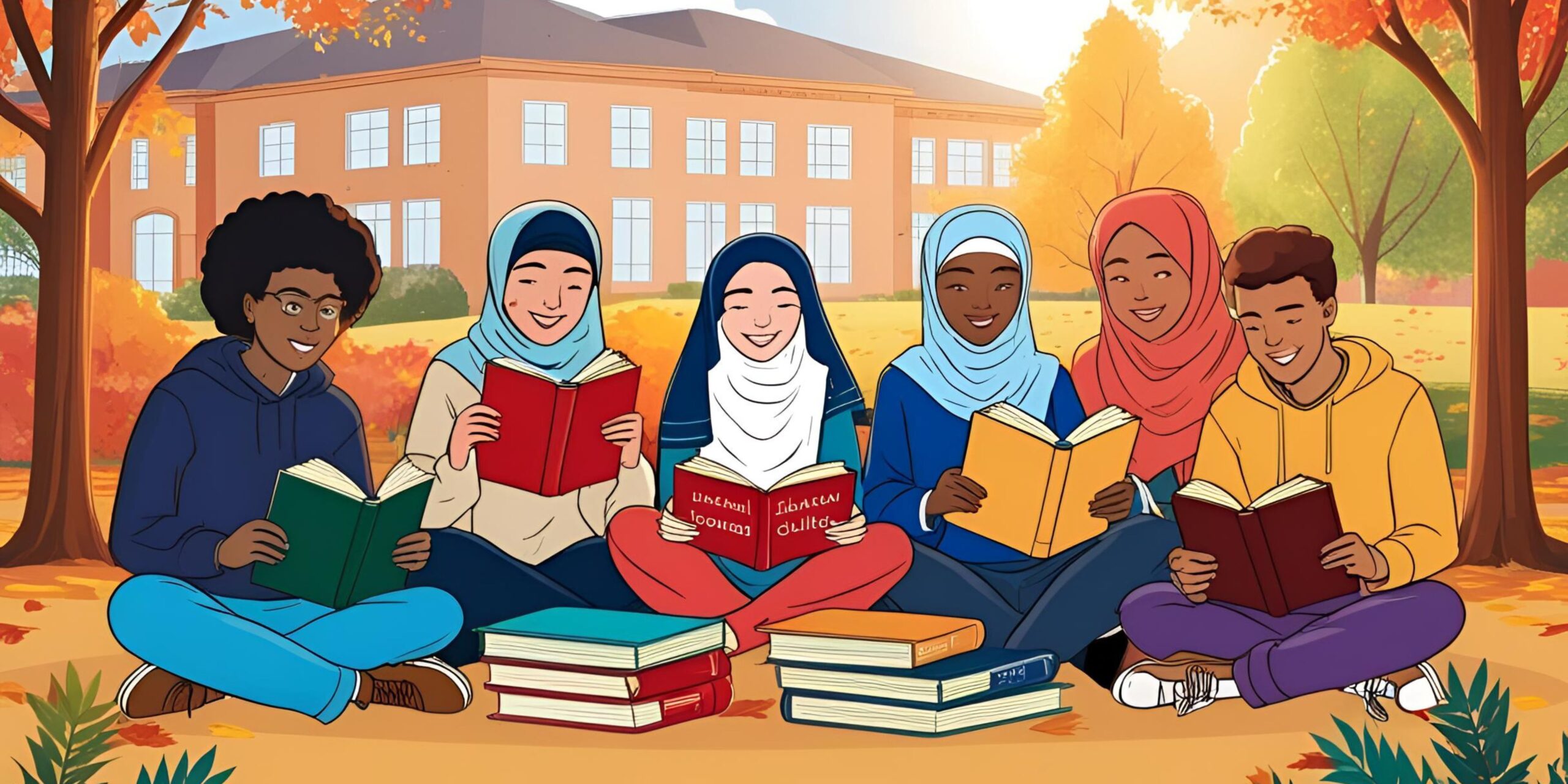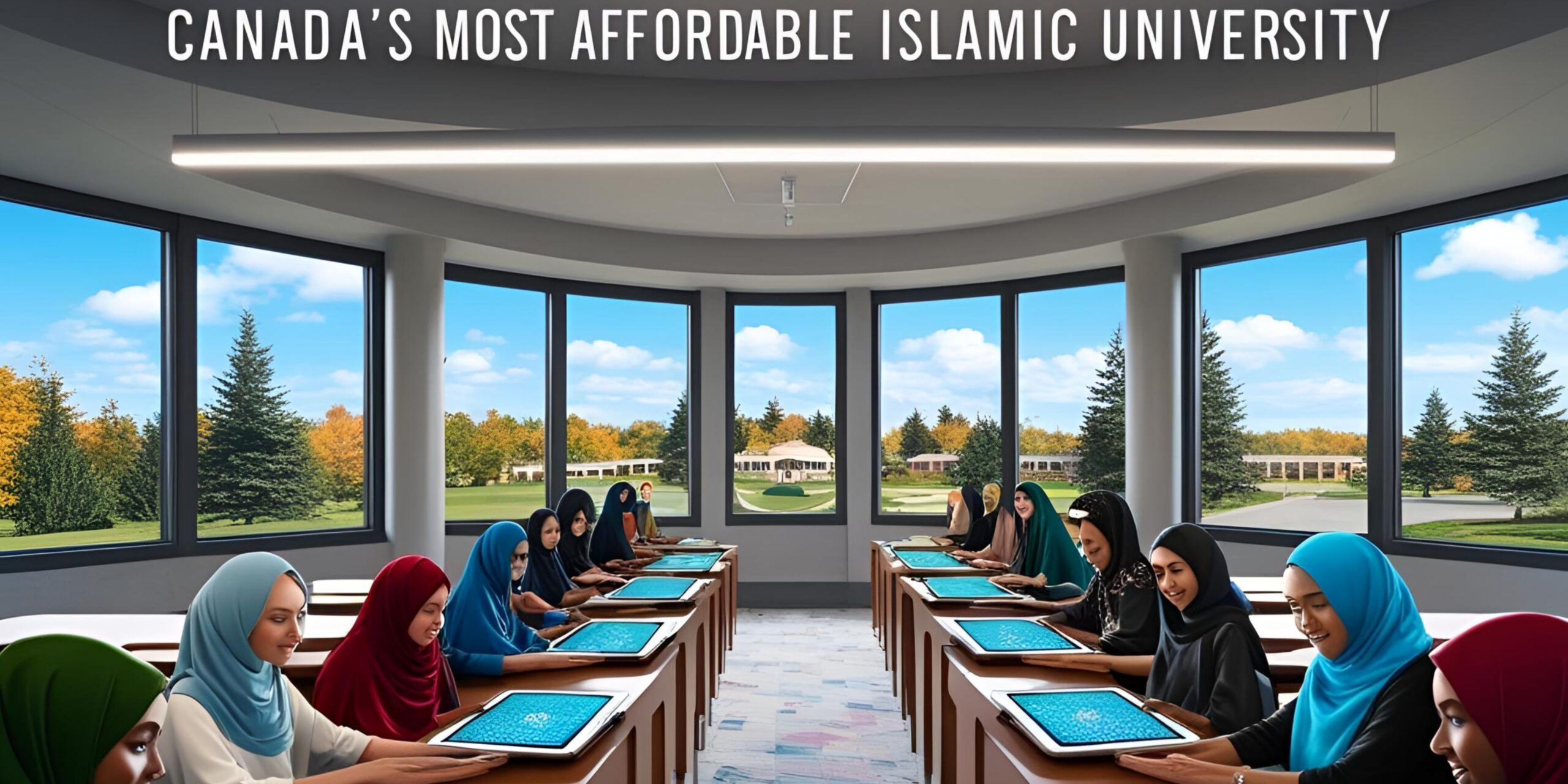In recent decades, American higher education has seen a rise in courses focused on Islamic studies. At first, this trend seems like a natural part of diversity and cultural exchange. It also reflects the need to understand our globalised world. However, there is more beneath the surface. This story is full of complexity, controversy, and passion. It shows both the promises and challenges of changing academic landscapes.
This article reveals the truth about the growth of Islamic studies on American campuses. It looks at the historical roots and the forces driving current trends. It also examines the impact these programs have on students, faculty, and society as a whole. The following narrative offers a clear view of what’s shaping Islamic studies today. It aims to inform, challenge, and encourage dialogue on academic freedom, cultural integration, and the future of higher education.

The Historical Journey of Islamic Studies
To understand Islamic studies in America today, we must look at its history. In the early days of Western academia, Islamic scholarship mainly fell under Oriental studies and Middle Eastern history. Pioneers in this field were drawn to the vast literature, art, philosophy, and science of Islamic civilization. Early scholars worked on translating ancient manuscripts and examining the intellectual achievements of the Muslim world. These achievements included advancements in astronomy, medicine, poetry, and ethics.
As American universities broadened their global perspective in the mid-20th century, Islamic studies changed from a minor interest to a focused field. Schools with a strong background in cultural studies saw that understanding global history required studying Islam. This civilization has deeply influenced both the East and the West. Over time, courses evolved from just historical accounts to include theology, law, art, and philosophy. This shift created a curriculum that highlighted both the academic roots and modern importance of Islamic thought.The Modern Resurgence: Driving Forces Behind the Trend
In recent years, several factors have contributed to the dramatic rise of Islamic studies on American campuses. While increased immigration and globalization have naturally diversified the student population, these factors alone do not account for the explosive growth in this field. Instead, a convergence of political, social, and cultural dynamics has sparked a renewed interest in understanding Islam in a modern context.
Political discourse—particularly in the aftermath of events that have shaped modern terrorism narratives—has dramatically influenced public interest in Islamic studies. Following a series of high-profile global and domestic incidents, there has been a growing urgency among academics and policymakers alike to demystify the religion that many see as being at the heart of complex security challenges. For some, the surge in Islamic studies represents an attempt to look beyond the headlines and gain a nuanced perspective on an often misunderstood faith. For others, however, there is a concern that the focus on current events may overshadow the broader intellectual and cultural heritage of Islam.
Simultaneously, the evolution of multiculturalism and the demand for a more inclusive curriculum have prompted universities to expand their course offerings. In many cases, Islamic studies programs are seen as a counterbalance to what some perceive as the limitations of Western-centric education. By integrating Islamic perspectives with literature, philosophy, and art, institutions aim to foster a truly global academic community—a community where complex ideas and diverse viewpoints can be explored in depth.
The Shocking Truth Behind the Rise of Islamic Studies on American Campuses!
Read more:
The Academic and Cultural Landscape on Campus
American campuses today are vibrant melting pots of cultural diversity, and Islamic studies play a significant role in this diversity. Faculty from diverse backgrounds—ranging from established scholars trained in traditional Islamic thought to younger academics bringing fresh perspectives from interdisciplinary fields—are shaping the curriculum. They are working hard to bridge historical scholarship with contemporary issues, ensuring that Islamic studies are not confined to the dusty pages of ancient texts but are dynamically connected to modern society.
Yet, behind the scenes, debates over curriculum design and academic freedom are rife. Some faculty members argue that current programs risk reducing a rich, multifaceted religious tradition to a set of political talking points centered on extremism and conflict. They worry that such a reductionist view might foster division rather than understanding, painting an incomplete picture of Islam’s intellectual and cultural contributions.
Students, too, are grappling with these issues. Many international students and American Muslims in these programs feel caught between academic inquiry and community expectations. The academic setting promotes critical examination and debate about historical narratives and current policies. However, for many, studying Islam is closely linked to personal identity and community heritage. This balance can be hard to maintain.
The fast growth of Islamic studies courses has created logistical and administrative challenges. Universities now face rising enrollment, a lack of specialized instructors, and differing expectations between administrators and academic departments. These issues are not just about resources; they show deeper ideological differences about what valid scholarly inquiry means for one of the world’s major religions.
Political and Ideological Influences on the Curriculum
An unavoidable aspect of the rise of Islamic studies on American campuses is the interplay between academic scholarship and political ideology. Post-9/11 America has witnessed a dramatic reshaping of public discourse around Islam. In a climate where security concerns, counter-terrorism policies, and cultural debates are omnipresent, the academic study of Islam has sometimes been seen as politically charged terrain.
Many critics say that political influences have pushed universities to focus on themes related to national security. Courses often cover topics like radicalization, terrorism, and Middle Eastern geopolitics. While these subjects are important, many scholars warn that this focus can unintentionally paint Islam mainly as a source of conflict and fear, ignoring its rich traditions and intellectual achievements.
Funding pressures and policy requirements sometimes force academic departments to align their research with national interests. Government grants, private donations, and partnerships can shape research agendas. This may lead to a focus on topics that seem socially and politically relevant, but this often comes at the cost of long-term scholarly inquiry.
In response, more academics are calling for a balanced approach. They want to address contemporary issues while placing them in a broader historical and cultural context. They believe that the full story of Islam includes not just modern challenges but also a rich legacy of intellectual inquiry, artistic brilliance, and philosophical debate that has influenced civilizations worldwide.
Confronting Misconceptions and Fostering Dialogue
One alarming outcome of a politicized curriculum is the spread of misconceptions. This can create a polarized public. When education focuses too much on controversies linked to Islam, it can unintentionally fuel negative stereotypes. It also simplifies a complex tradition. Many students leave these programs with a distorted view. They often prioritise conflict over dialogue. This perspective can hinder efforts for mutual understanding instead of helping.
To counter these tendencies, some institutions have begun redesigning their Islamic studies programs. The aim is not to ignore the contemporary issues that concern society, but to integrate them into a richer narrative that honors both the historical and modern dimensions of Islam. This comprehensive approach involves the study of classical texts, the arts, and the philosophy of Muslim thinkers, alongside an examination of current challenges such as migration, identity, and interfaith relations.
In practice, this means expanding course content to include subjects such as:
- The literary and artistic traditions of the Muslim world.
- The scientific and philosophical innovations of medieval Islamic civilization.
- Comparative studies that examine the intersections between Islamic and Western thought.
- The diverse expressions of Islam across different cultures and regions.
This curriculum aims to boost critical thinking. It encourages students to explore the transformative power of Islamic scholarship and its relevance today. By doing this, universities can connect academic inquiry with public discussion. This helps create a more informed and tolerant society.
Personal Stories and Campus Dynamics
Central to understanding the rise of Islamic studies is the human element—students and professors who navigate these debates on a daily basis. Anecdotes from various campuses offer a window into the lived reality of these academic experiences. In one university, a young Muslim scholar described her journey as both empowering and challenging. While she appreciated the academic freedom to explore her heritage, she also felt the weight of representing her community in a climate of heightened suspicion.
Similarly, professors report that their classrooms have become microcosms of broader societal tensions. Heated debates often emerge over questions of interpretation, identity, and the role of religion in public life. Despite these challenges, many educators remain optimistic. They believe that through rigorous scholarship and open dialogue, it is possible to break down barriers and foster a more nuanced understanding of Islam.
At the same time, resistance to change is also evident. Some traditionalists believe that focusing on modern political issues harms the study of classical Islamic thought. They urge a return to foundational texts and methods. They warn that modern reinterpretations might weaken the core truths of the tradition. This conflict between innovation and tradition is not just in Islamic studies. It shows a larger debate about academic progress and how higher education shapes cultural narratives.
Frequently Asked Questions (FAQs)
u003cstrongu003eWhat factors have contributed to the rise of Islamic studies on American campuses?u003c/strongu003e
The surge in interest can be attributed to several factors, including increased globalization, evolving demographics, political events, and the need for academic programs that reflect multicultural realities. American universities are expanding Islamic studies to address both historical achievements and contemporary issues, thereby fostering a more comprehensive understanding of the subject.
u003cstrongu003eHow has the curriculum in Islamic studies evolved over time?u003c/strongu003e
Initially, Islamic studies were limited to historical texts and Oriental studies. Over time, however, programs have broadened to include theology, law, art, literature, and philosophy. Today, many courses are designed to juxtapose classical scholarship with current geopolitical and social debates, although this balance is sometimes a subject of controversy.
u003cstrongu003eAre there concerns about academic freedom in Islamic studies programs?u003c/strongu003e
Yes, some educators and scholars have raised concerns that political pressures and funding constraints may lead to self-censorship or an overemphasis on politically charged topics, potentially overshadowing the broader and richer intellectual heritage of Islam. Advocates argue that preserving academic freedom is crucial for fostering open debate and a nuanced understanding.
u003cstrongu003eWhat impact does the study of Islamic studies have on broader society?u003c/strongu003e
A well-rounded curriculum in Islamic studies can help dismantle stereotypes, promote interfaith dialogue, and enhance cultural understanding. It not only informs students but also has broader social implications by shaping public perceptions and contributing to a more tolerant, informed society.
u003cstrongu003eHow can universities ensure a balanced approach to teaching Islamic studies?u003c/strongu003e
Universities can achieve balance by integrating diverse perspectives—ranging from classical Islamic thought to modern reinterpretations—into the curriculum. Supporting interdisciplinary research centers, protecting academic freedom, and engaging a diverse body of scholars are key strategies to provide a complete picture that neither sensationalizes nor oversimplifies the subject.
The Future of Islamic Studies on American Campuses
Looking ahead, the future of Islamic studies in American academia holds both promise and uncertainty. On one hand, the increasing diversity of student populations and the rising interest in global issues suggest that Islamic studies will continue to grow in relevance and scope. Universities are becoming more aware of the need to provide curricula that reflect the complexities of a multicultural society—a society where understanding differences is key to peaceful coexistence.
The pressure to conform to politically acceptable narratives is a big challenge. Educators must balance immediate societal concerns with the integrity of long-term research. Moving forward may need bold reforms, more funding for independent studies, and a strong commitment to academic freedom despite outside pressures.
Some institutions are already pioneering innovative models by establishing interdisciplinary centers that bring together experts from religious studies, political science, anthropology, and even the arts. These centers aim to create spaces where the study of Islam is not isolated from other fields but enriched by multiple perspectives. They have proven successful in generating new research, hosting public debates, and facilitating community outreach programs that demystify Islamic culture.
American universities are changing, but one goal stands out: to create a true understanding of Islam. This understanding should go beyond simple labels and shallow stories. The aim is to build an academic space that honours all aspects of Islamic thought. This includes classical scholarship and modern reform. Here, debates should be welcomed, not silenced. Students from all backgrounds should have a place to learn, share, and grow.
Conclusion: A Call for Scholarly Integrity and Open Dialogue
The rise of Islamic studies on American campuses is a multifaceted phenomenon.It shows a larger change in higher education. This change comes from shifting demographics, political needs, and the push for a more inclusive academic setting. However, it also brings serious challenges. There is a danger of oversimplifying a complex tradition into politically driven stories. The impact of this goes beyond the classroom. Misunderstandings can lead to intolerance, and a limited curriculum can suppress the deep discussions needed for progress.
What is urgently needed is a reaffirmation of scholarly integrity—a commitment to exploring Islam in all its dimensions.
Universities need to collaborate on curricula that value both historical depth and modern relevance. They must protect academic freedom, allowing for open discussions of controversial ideas. Most importantly, they should see that the real value of Islamic studies is not in supporting political agendas, but in fostering understanding, respect, and the transformative power of knowledge.
The surprising truth is not that American universities are hiding information about Islamic studies. Instead, these institutions face a major challenge: balancing different narratives, resisting outside pressures, and giving students a well-rounded education. This prepares them for a complex and interconnected world.
The future of Islamic studies—and indeed, the future of a truly inclusive society—depends on how well we meet this challenge.
























Post Comment